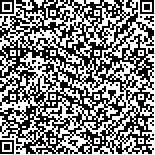| 引用本文: |
吕怡, 黄雨, 寻馨, 彭清华.基于窠囊理论探讨青光眼术后瘢痕化诊治[J].湖南中医药大学学报,2025,45(10):1948-1952[点击复制] |
|
| |
|
|
| 本文已被:浏览 111次 下载 58次 |
| 基于窠囊理论探讨青光眼术后瘢痕化诊治 |
| 吕怡,黄雨,寻馨,彭清华 |
| (湖南中医药大学, 湖南 长沙 410208;湖南省中医药防治眼耳鼻咽喉疾病与视功能保护工程技术研究中心, 湖南 长沙 410208) |
| 摘要: |
| 青光眼是眼科常见的不可逆性致盲眼病,目前虽有药物、激光、手术等治疗方式可缓解疾病进程,但术后眼压的控制及并发症的预防仍是当前治疗的重难点。窠囊理论是中医学痰瘀互结学说的重要组成部分,被应用于各类疾病的辨证论治中。青光眼术后瘢痕化的病机为痰浊阻窍、瘀血滞络、正气亏虚,与窠囊理论的内涵一致。因此,本文在窠囊理论的指导下,提出三大治疗原则(气津同调,以防窠囊;化痰祛瘀,以散窠囊;固本培元,以消窠囊),并结合不同病证附以相关方药,以期帮助青光眼患者改善预后,降低术后并发症的发生率。 |
| 关键词: 青光眼 术后瘢痕化 窠囊理论 痰瘀互结 滤过泡 中医治疗 |
| DOI:10.3969/j.issn.1674-070X.2025.10.020 |
| 投稿时间:2025-05-05 |
| 基金项目:国家自然科学基金面上项目(82274588,82575150,81273807);国家中医药管理局中医眼科学重点学科建设项目(ZK1801YK015);中医药防治眼耳鼻咽喉疾病湖南省重点实验室开放基金项目(2018YZD02);中医药防治五官科疾病湖南省重点实验室建设项目(2017TP1018);湖南省自然科学基金青年基金项目(2020JJ5436);湖南省研究生科研创新项目(CX20240073)。 |
|
| Diagnosis and treatment of postoperative scarring in glaucoma based on the "Nesting Theory" |
| LYU Yi, HUANG Yu, XUN Xin, PENG Qinghua |
| (Hunan University of Chinese Medicine, Changsha, Hunan 410208, China;Hunan Provincial Engineering and Technological Research Center for Prevention and Treatment of Ophthalmology and Otolaryngology Diseases with Chinese Medicine and Protecting Visual Function, Changsha, Hunan 410208, China) |
| Abstract: |
| Glaucoma is a common irreversible blinding ophthalmic disease. Although current treatment modalities, including medications, laser therapy, and surgery, can slow disease progression, the control of intraocular pressure (IOP) and prevention of postoperative complications remain critical challenges in clinical management. The "Nesting Theory" (a TCM concept denoting entrenched lesions formed by the interplay of phlegm and blood stasis) is a crucial component of the TCM doctrine of intertwined phlegm and blood stasis, which has been widely applied in the pattern differentiation and treatment of various diseases. The pathogenesis of postoperative scarring in glaucoma aligns with the core tenets of the Nesting Theory, manifesting as obstruction of orifices by turbid phlegm, blockage of collaterals due to blood stasis, and deficiency of healthy qi. Guided by this theory, this study proposes three therapeutic principles: (1) harmonizing qi and body fluids to prevent "nest" formation, (2) resolving phlegm and dispersing blood stasis to dissolve existing "nests", and (3) reinforcing the foundation and nourishing Yuan-primordial qi to eliminate "nest" residues. These principles are further supplemented with specific herbal formulas tailored to different patterns, aiming to improve prognostic outcomes in glaucoma patients and reduce the incidence of postoperative complications. |
| Key words: glaucoma postoperative scarring Nesting Theory intertwined phlegm and blood stasis filtering bleb Chinese Medicine treatment |
|

二维码(扫一下试试看!) |
|
|
|
|




